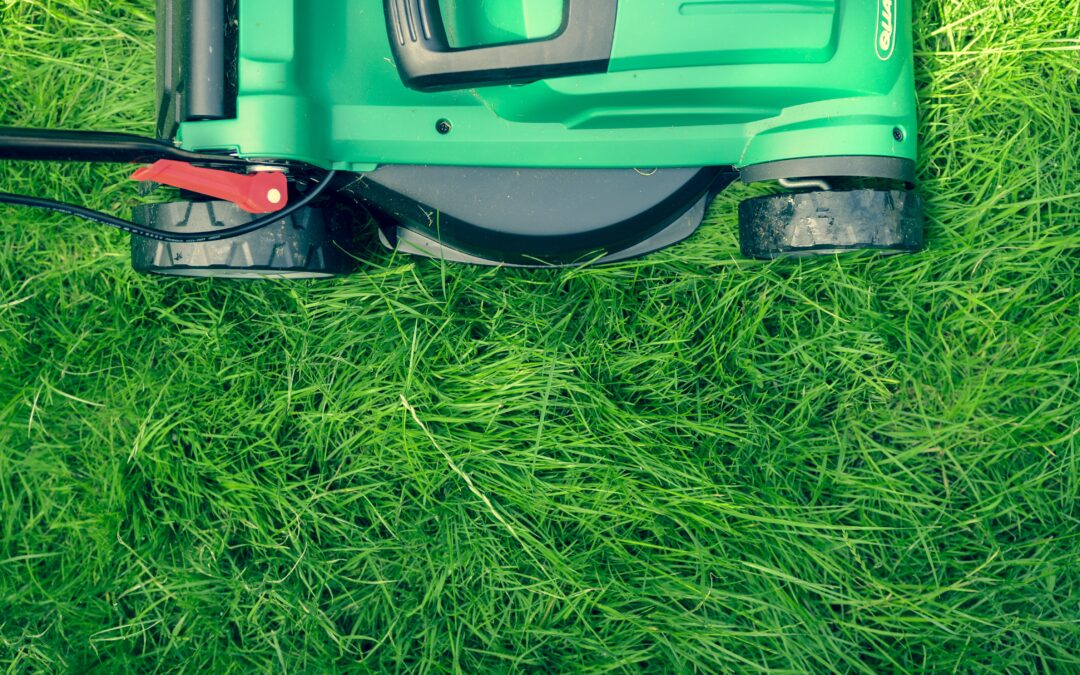To mulch or to bag?
Whichever you choose, you need the right tools for the job. And by tools, we mean your lawn mower blades.
Choosing the right blades not only ensures that you get the desired result but by selecting the right blade for the right purpose, you’ll shorten the time spent on lawn care, reduce unsightly thatching, and keep your lawnmower in peak working condition.
So, how do you choose between mulching blades vs regular blades vs bagging blades? We’re here to give you some tried and tested guidance.
Read on to find out the difference between these blades and which situations each one shines in.
Why You Need the Right Lawn Mower Blades
Not all blades can be used for the same purpose, so it’s essential for you to choose the right mower blades for certain lawn care tasks.
Here are some compelling reasons to select your blades based on your lawn care project.
The Cut Quality
Mulching, bagging, and regular blades have different lift and serration profiles. This means that each blade will cut your grass differently — and cut quality matters when you’re mulching or bagging.
Keeping Your Lawn Healthy
Do you want to add some extra nitrogen to keep your lawn lean and green? If so, your mower blade needs to be a mulching blade.
By contrast, a bagging blade is better for when you’re tending to a damper lawn with more growth and seeding.
Mower Performance
Your lawn mower will perform at its best when you select the right blades. With suitable lawn mower blades, your lawn mower’s efficiency improves along with its longevity. You’ll also reduce engine strain and oil usage, meaning you’ll spend less on mower maintenance.
You Can Bid Farewell to Cleanups
Mulching and bagging blades may be different. However, they have one thing in common — they eliminate the need for you to clean up clippings.
Mulching blades chop up grass into tiny clippings that are absorbed by the soil. As a result, there’s no need to clean up your clippings as they become small enough to be food for the flora, so to speak.
On the other hand, bagging blades are a godsend when you’re not looking forward to raking clippings after mowing. These blades cut longer grass and then bag it, reducing the need for you to rake or clean up clippings.
What Are Mulching Blades?
Mulching blades cut grass into smaller pieces that are converted into mulch. The mulched grass is so fine that it becomes easily absorbed by the soil for nutrients.
Cutting grass into fine clippings necessitates a higher lift profile, upward curved design, and serrated edges — all qualities mulching blades possess.
By using mulching blades, you will become more efficient in cutting shorter grass and ensuring that your soil receives nutrients from fine decomposed clippings.
What Are Bagging Blades?
If you’re staring at a lawn with a bit of overgrowth, bagging blades are your solution.
Bagging blades, also known as collection blades, are straight mower blades designed to create airflow within the mower deck. The airflow creates a vacuum-like pressure that directs cut grass into a bag that’s attached to your mower.
Because of what bagging blades are meant for, they come with several features.
First, unlike their mulching-purposed counterparts, bagging blades have little to no serrations. Rather, straighter edges are a feature of these blades and aid in lifting long grass for better cutting.
Second, bagging blades have a much higher lift than mulching blades. “Why is this necessary?” you ask?
The higher lift profile helps bagging blades create the “suction” necessary to direct clippings into a collection bag.
Mulching Blades vs Regular Blades vs Bagging Blades
Now that we’re clear on the differences between mulching blades vs bagging blades, let’s talk about when they’re best used. We’ll also compare these two mower blades with regular blades.
For Shorter Grass, Lawn Health, and Frequent Lawn Care: Mulching Blades
Your mulching blade is your best friend if you’re looking for healthier grass on your lawn. By using a mulching blade, you’ll be cutting up shorter grass into fine nitrogen-filled clippings that decompose and nourish your lawn’s soil.
Because mulching blades work best with short soil, these blades are excellent for frequent lawn care. Use mulching blades if you tend to your lawn every four to six days.
For Cleanliness and Taller Grass: Bagging Blades
Certain situations can bring about grass overgrowth. If you’ve left your grass unattended for a while, bagging blades are your solution for a cleaner lawn.
Bagging blades facilitate grass collection by cutting and suctioning grass. As a bonus, these blades fare better with taller grass due to their straight edges and higher lift profiles and are even a superior option to mulching blades when you’re dealing with a bit of lawn dampness.
For Mixed Grass Types and General Lawn Maintenance: Regular Blades
Regular or standard blades boast versatility and easy maintenance. The serrations and balanced lift profiles of these blades are excellent at delivering even cuts. Hence, regular blades benefit homeowners who engage in general lawn care and have different types of grass on their lawns.
Mulching Blades vs Regular Blades vs Bagging Blades: The Choice Depends on Your Needs
Choosing the right blades starts with knowing what you want to get out of your lawn care project.
For mower blades for a wide variety of lawn care projects, check out MowTown Blades — your one-stop online shop for quality and affordable replacement lawn mower blades. Whatever your project is, we have the mower blades for it.
FAQs
Can Standard Blades Be Used for Mulching?
Despite their versatility, regular or standard blades aren’t optimized for mulching. For the best results, you’ll need a blade with curved serrations and a higher lift, which are features you’ll find in mulcher blades.
Of the Three Blades Mentioned, Which One Is the Easiest to Maintain?
We’d say that standard blades are the most low-maintenance option. Their straightforward design and limited serrations make them easy to sharpen and balance.
Does Mulching Have Any Environmental Benefits?
You bet!
Mulching allows homeowners to use grass clippings to add nitrogen to the soil. Hence, there’s no need for chemical fertilizers that can accumulate to toxic levels.

